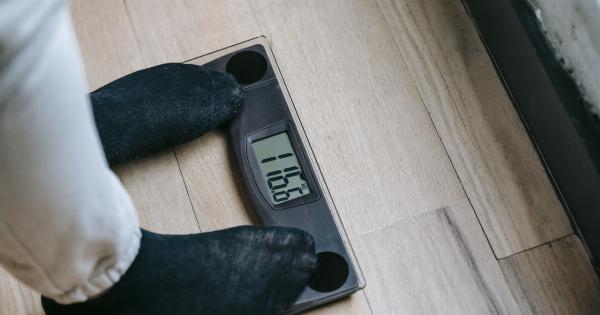Embarking on a weight loss journey can be exciting, but it’s important to track your progress along the way. Tracking your weight loss allows you to celebrate milestones, identify what’s working, and make necessary adjustments.
Whether you prefer technology, good old-fashioned pen and paper, or a combination of both, there are plenty of ways to track your weight loss progress. In this article, we’ll explore five effective methods to help you stay motivated and accountable on your weight loss journey.
1. Use a Digital Fitness Tracker
One of the easiest and most convenient ways to track your weight loss progress is by using a digital fitness tracker.
These devices are designed to monitor various aspects of your health and activity levels, including steps taken, calories burned, and even your sleep patterns. Many trackers also come with a built-in heart rate monitor, which can provide valuable insights into the intensity of your workouts.
To track your weight loss, most fitness trackers have a feature that allows you to input your current weight and set a goal weight.
The device will then track your progress towards your goal weight, providing you with a clear visual representation of your journey. Some fitness trackers also offer additional features such as meal and water intake tracking, making it easier to monitor your overall health and wellness.
2. Keep a Weight Loss Journal
A weight loss journal is another effective way to track your progress. It allows you to document not only your weight, but also your feelings, challenges, and successes throughout the process.
By writing down your thoughts and experiences, you can gain a deeper understanding of your relationship with food and exercise.
In your weight loss journal, record your daily food intake, exercise routine, and any feelings or emotions you may be experiencing. This will help you identify patterns and make necessary adjustments to your habits.
Additionally, having a physical journal can serve as a tangible reminder of your journey and how far you’ve come.
3. Take Progress Photos
While stepping on the scale can provide a numerical representation of your weight loss, progress photos can offer a visual record of your transformation.
Taking regular progress photos allows you to see the physical changes that may not be as obvious on a daily basis.
Choose a consistent time of day and a specific pose or angle for your progress photos. This will help ensure accurate and comparable images.
As you compare photos over time, you’ll be able to see the changes in your body shape, muscle tone, and overall appearance.
4. Measure Your Body Composition
Weight alone doesn’t always tell the whole story when it comes to your health and fitness progress. It’s important to consider your body composition, which refers to the ratio of fat to muscle in your body.
Tracking changes in your body composition can be a more accurate reflection of your overall progress than weight alone.
There are various methods to measure body composition, such as skinfold calipers, bioelectrical impedance devices, and DEXA scans. These methods may require the assistance of a healthcare professional or specialized equipment.
By tracking changes in your body fat percentage and lean muscle mass, you can monitor your progress and make adjustments to your diet and exercise routine as needed.
5. Utilize a Weight Loss App
In the digital age, there is truly an app for everything—including weight loss! Using a weight loss app can be an effective way to track your progress, as well as gain access to valuable resources and support.
Weight loss apps typically include features such as calorie tracking, exercise logging, and goal setting.
With a weight loss app, you can easily input your meals and workouts, allowing the app to calculate your daily caloric intake and expenditure.
This can help you stay on track with your weight loss goals and make informed decisions about your nutrition and exercise choices. Additionally, many weight loss apps offer community support, allowing you to connect with others on a similar journey.
Conclusion
Tracking your weight loss progress is an essential part of any successful weight loss journey.
Whether you choose to utilize a digital fitness tracker, keep a weight loss journal, take progress photos, measure your body composition, or use a weight loss app, finding a method that works for you is crucial.
Remember, weight loss is a journey, and progress can sometimes be slow or sporadic. By consistently tracking your progress and celebrating even the smallest victories, you can stay motivated and focused on reaching your ultimate goals.




























